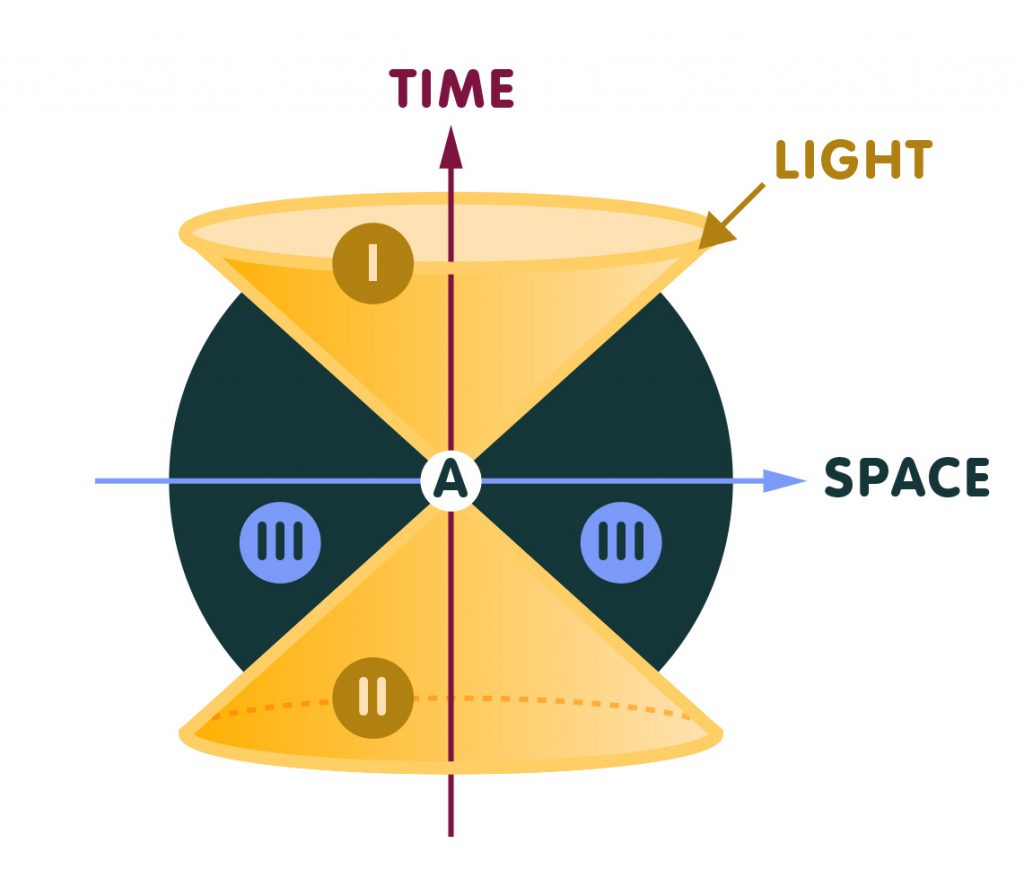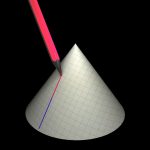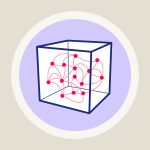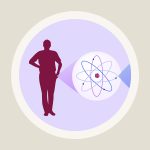Special relativity / Elementary Tour part 5: Spacetime
In special relativity, as was mentioned briefly, simultaneity is relative, and so are time and space. Observers moving relative to one another come to different conclusions about which events happen simultaneously (“at the same time”). They agree only about what events there are, not about where or when these events take place. Spacetime, the totality of all events, is absolute. But there are different ways to slice that collection of events into snapshots of simultaneity. When viewed in succession, these snapshots show how, with time, changes take place in space. Different observers, looking at different successions of snapshots, come to different conclusions about which events are simultaneous. Spacetime is absolute, space and time are not.
Nevertheless, spacetime does retain what physicists call a causal structure, which is the same for all (inertial) observers. This structure determines which events can, in principle, be influenced by which other events, and also for which pairs of events mutual influence is impossible.
For every event A, happening at a definite location at a definite time, and every event B, also defined by location and time, we can ask: Could A, by whatever means, be the cause of B? We are able to answer this quite generally because of the role of light speed as the absolute upper limit for the transmission of energy, matter and information. Whatever influence A could have exerted to cause B, such influence could have travelled no faster than the speed of light. If B happens too soon, too far away from A, so that a light signal starting at A would reach the location of B only after the event B had already happened, then any putative influence of A on B would have had to have travelled faster than light. On the other hand, if such a light signal were to reach the location of B before the event B actually happened, then any supposed influence from A could reach B without having to break the cosmic speed limit. We still wouldn’t know what influence that might have been, or whether it could have been transmitted in any realistic way. But we do have a rough notion of causality: For every pair of events, we can tell whether an influence is possible in principle, simply by looking how long it would take a light signal from A to reach the location of B.
In relativity, the “region of influence” of an event is often represented graphically, in the following way:

spacetime diagram
Such a figure is called a spacetime diagram, and the vertical axis represents time (as measured by a specific observer), while the horizontal axis represents space. Light signals produced or received at the event A (itself located where the two axes intersect) and moving away into space are represented by the diagonal yellow lines. They delineate a region of spacetime which is called the light cone of the event A – with the additional two space dimensions included, this region would be the higher-dimensional analogue of a double cone.
In the upper part of the light cone, denoted as region I in the figure and called the “future light cone”, you can find all events on which event A could have an influence (in other words: a light signal or slower-than-light influence from A could reach such an event). In the lower part, the “past light cone”, region II, lie all events by which A could have been influenced (again in other words: from such events, a light signal or slower-than-light influence could have made it to the location of A in time). Outside the double cone, in region III, lie all the events which are causally separated from A. Those events can neither influence A nor be influenced by A.









